
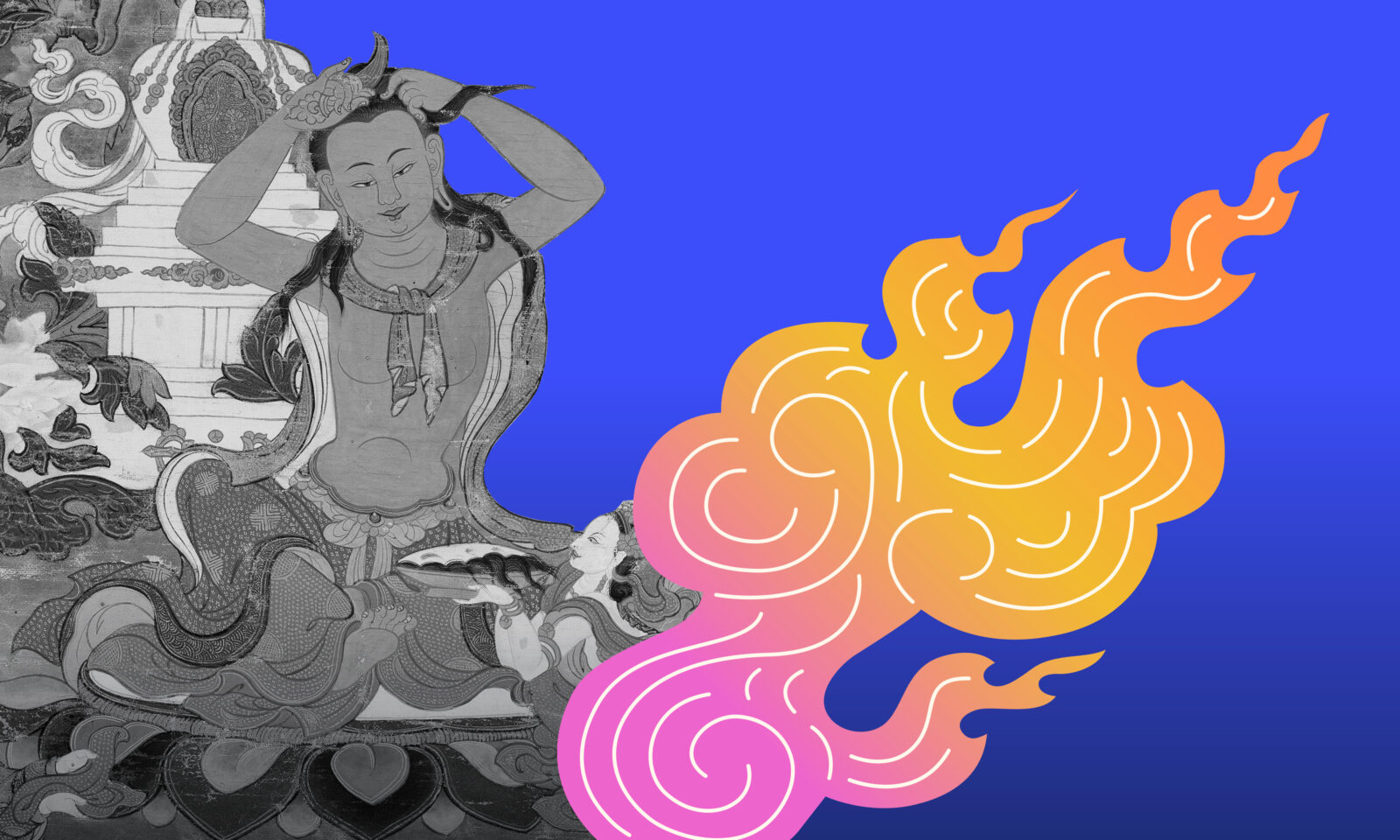
Tashi Chodron:
རྩ་རྣམས་ཞིང་གི་སྐྱོན་ཡིན་ཏེ།
འདོད་ཆགས་སྐྱེ་བོ་འདི་ཡི་སྐྱོན།
དེ་སླད་འདོད་ཆགས་བྲལ་བ་ལ།
སྦྱིན་པ་འབྲས་བུ་ཆེན་པོ་འགྱུར།
Isabella Rossellini:
“Weeds are the blemish of the fields,
and attachment is the blemish of mankind.
Hence what is given to those freed from attachment yields abundant fruit.”
Annabella Pitkin:
I think so often, the words “non-attachment” strike the ears of, you know, English-speaking, you know, non-Buddhists as somehow telling people that they shouldn’t have any feelings, or they shouldn’t like anything or love anybody or enjoy anything. And that can really be such an obstacle to understanding.
Eve Ekman:
There’s been unfortunately so much misunderstanding of this idea of non-attachment, especially as it mixes with contemporary psychology. All we want, all we’re told we need is a secure attachment. So, why on earth would we be seeking non-attachment in the Buddhist context or philosophy?
Sonya Renee Taylor:
Unattachment is sort of synonymous with surrender for me. What am I being asked to let go of? And not even necessarily let go of, but be willing to let go of. Right? Like, for me it’s really been this visual of like, here is life and all the ways in which I’ve been like “I am holding life!”
I still get to hold it, but I don’t get to squash it. I don’t get to crush it with my desire to control it and keep it and have it be the way I want it to be.
Isabella Rossellini:
Welcome to season 4 of AWAKEN, a podcast from the Rubin Museum of Himalayan Art about the dynamic path to enlightenment and what it means to “wake up.” I am Isabella Rossellini, an actress, a filmmaker, and your host for this season of AWAKEN, where we are exploring a fundamental concept in Buddhist thinking and philosophy: attachment.
Himalayan art has long been a pathway to insights and awakening, and in this season, we will look at objects from the Rubin’s collection as a way to better understand attachment and its counterpoint, non-attachment, which translates into openness, or seeing things as they truly are. With stories and wisdom from artists, writers, poets, Buddhist teachers, psychologists, scholars, and others we will explore the meaning of attachment and how it shows up in different parts of our lives.
What does this term non-attachment actually mean? There are so many different ways to interpret it, and so much depends on context. Psychologist Dr. Richie Davidson.
Dr. Richie Davidson:
In the context of a parent-child relationship, when attachment is used there are different forms of attachment, and there is a healthy form of attachment that basically has the infant or developing child appreciating the security of his or her parent or caregiver providing safety and nurturance, where the child knows that he or she can return to the caregiver and have their needs provided for.
In the Buddhist context, attachment and nonattachment, it has nothing to do with the parent-child relationship. It can have something to do with it, but it’s not its origin.
Eve Ekman:
What really is going on is this idea of not being attached to the outcome. Not being attached to a specific point of view. Not being attached to an idea of yourself and how the world should work. In some ways, it’s allowing yourself to be free from expectations.
Isabella Rossellini:
Contemplative social scientist, Eve Ekman.
Eve Ekman:
And whenever we are reflective on what creates disappointment, frustration, agitation, it’s when our expectations aren’t met. It’s in a way kind of a rip-off with life, we’re not being generous with life. We are having a demand about what we think we should have and when we should have it and that creates this clinging, this grasping.
You hear those words used interchangeably with attachment in the context of Buddhism. So when we can release or loosen some of that grasping, doesn’t mean we don’t care, we don’t love our friends, our family, we don’t enjoy all the sensuousness of life. The food and the beautiful flowers, we can really appreciate it, but we don’t have an expectation that it will always be the same or always there for us.
Annabella Pitkin:
From the perspective of Buddhist writers and thinkers and teachers, the opposite is true. Non-attachment really makes sense if you think about it as a form of generosity or a form of freedom.
Isabella Rossellini:
Annabella Pitkin, scholar of Tibetan Buddhism.
Annabella Pitkin:
So when we conventionally move through the world, often without thinking about it at all, there’s a real tendency to always be having what the young folk call a main character moment, where whatever it is that’s happening, it’s happening to me, and I’m the star of that story. And that is a intuitive way for us to move through our experiences, and it can often be a very exciting way to relate to our lives. But it does make us lonely, and make us a little bit separated from the experiences that we’re having, and particularly from the people that we love the most and want the most to connect to. And non-attachment, rather than being something punitive or limiting, non-attachment you could think of as something like opening your hands or putting down a kind of burden that was blocking you from hugging the other person.
Tenzin Wangyal Rinpoche:
If you reach some degree of non-attachment, it will be more like—you are a little bit more like being mirror.
Isabella Rossellini:
Teacher and meditation master in the Bon Buddhist tradition Tenzin Wangyal Rinpoche.
Tenzin Wangyal Rinpoche:
Mirror will not try to fix you. Mirror will not try to change you. Mirror will not try to judge you. Mirror will not try to suppress you. But mirror role is being mirror. Genuine, open, being there. Allow you to reflect genuinely what’s happening, rather than trying to manipulate any situation of your process.
Eve Ekman:
And I think it’s this really classic line, pithy phrases that you can use to really transform your mind.
And one of these slogans is, “Give up all hope of fruition.” And it’s not to give up hope, it’s not to stop wanting things, not to stop desiring. But the fruition is about how they will show up. And it’s a way of holding life lightly.
Tenzin Wangyal Rinpoche:
Of course we cannot completely be like a mirror because you are a person, you have a consciousness, you have a body, you have speech, you have a mind. Your body will move in response and react. Your speech will try to say something in response. But more of this mirrorlike wisdom quality it’s in your body, the more that mirrorlike wisdom quality in your speech, the more that mirrorlike wisdom quality in your heart, to other person to process their own journey, that is what we call being presence.
Annabella Pitkin:
Non-attachment is the kind of opening up to the spaciousness of relationship, and making it possible to relate to the other person for the other person’s sake, not because of what one could get from them.
Isabella Rossellini:
Tenzin Wangyal Rinpoche illustrates how this might play out in what can be one of the more tense circumstances we might engage in: The family holiday.
Tenzin Wangyal Rinpoche:
One thing you can go with attachment—“I really hope they will do what I wanted to do during this trip. This is my dream. This trip together will be my dream for a long time, and these are the specific dreams that I have. I wish they all flow with that.” Other thing will be, “Oh, I’m open to it. I’m happy to be together. But I wish these, these, these things. But I am open to their wishes too. So let’s find out what is their wishes.”
So you have a good plan, but you’re not guaranteed to succeed that second thought either. You’re only having those good thoughts while in their absence, not in their presence. In the situation, you might decide, “Oh, they disappointed me again.” Or you can go to the third level, which is the best one. I mean, it’s possible—most enlightened and most constructive, most—yeah, most healthiest will be, “I really don’t care. I am here to be with them. Whatever makes them happy or whatever mostly group makes happy, I will flow with them, every single of them.” It’s not which restaurant they go; I’m going with them. It’s not what they order; I’m eating with them. My purpose is to be with them and see them happy.
You’re still attached, but you are not attached to yourself as much. And that is very constructive and very healthy. This is what I think for personally, every time—that’s my journey of detachment and attachment. Of course, I can never say I don’t have attachment, but it’s always a question about, in my relationship to the other people, it’s what matters to them I try to fulfill. It’s not me. Even in the group, in community, and when we have a decision, I said, “If all of you agree together, go for it. Don’t think that I have to agree with it.” Because collective wisdom matters more than the individual’s wisdom or need.
Annabella Pitkin:
The real core is this openness, this kind of generosity that can come when we allow ourselves to kind of surrender the, you know, tight knuckled grip on the center stage.
Dr. Richie Davidson:
Human minds generate narratives.
Isabella Rossellini:
Again, Dr. Richie Davidson, founder and director of the Center for Healthy Minds, University of Wisconsin-Madison, and founder and chief visionary for Healthy Minds Innovations, Inc.
Dr. Richie Davidson:
This is what minds do, and everyone has a narrative. If you have a person just sitting there uninstructed, what most people do most of the time is think about themselves. That’s what people do.
Annabella Pitkin:
And it’s part and parcel of the other way that you can describe the core of dukkha, of dissatisfactoriness, which is our misperception of who and what we are, and how we exist in relationship to others.
Dr. Richie Davidson:
The goal, if you will, is not to get rid of the narrative, no. You can’t get rid of the narrative because this is what minds do. There always is a narrative. But you can change your relationship to the narrative, and this is something very important. When in the Buddhist context we talk about nonattachment, we often are referring to nonattachment to this entity that we call “me,” and that can be very liberating.
Annabella Pitkin:
And so that misperception, or what’s often called ignorance but it’s really more like miscognition, is part and parcel of this addictive relationship that we have to our experiences. And that kind of twofer, double punch of kind of misunderstanding addiction is so painful to us. And so the core point of something like the Buddhist Four Noble Truths is that that discomfort is actually familiar to everybody. It’s a core experience of our psychology. It’s even something that Buddhist writers say we share with other kinds of consciousnesses, like animals, for example.
We share this core discomfort and this root in ignorance and addictive craving.
I feel like nonattachment is such a deep learning, and such a deep teaching, and a journey point to kind of get to; but I think that, for me, I do feel like, yeah, that’s very true to me.
Isabella Rossellini:
Poet and filmmaker, Fatimah Asghar.
And I feel like a lot of my deep pain has actually come from attachment, has come from wanting to hold on to something as it’s wanting to go, and what it actually means to allow something to leave gracefully, and allow it to leave, knowing that it’s meant to, knowing that not everything is meant to stay forever. And that’s okay.
Isabella Rossellini:
Allowing something, or someone, to leave gracefully is the starting point of the Buddha’s story, and Buddhism as a whole. He left the comforts of his home and family, his first step towards extricating himself from his attachments. Annabella Pitkin shares that story.
Annabella Pitkin:
Shakyamuni Buddha is described by Buddhists as the historical Buddha, the Buddha of our era in the cosmos, 2,500 or so years ago in ancient South Asia, born in what is now part of Nepal, and then spending his teaching career across mostly northern parts of India. And the stories about who he was describe him as a prince.
It’s sort of hard to know if it was, you know, a big kingdom or a small kingdom. But, certainly, the early sutra literature describes him, and describes the Buddha describing himself, as having been carefully educated, sheltered by his parents, much beloved, from a comfortable maybe even wealthy aristocratic family. Later literature talks about him being beautiful, the most handsome, his hair is so long and thick and black and shining. He’s the best at all the sports, the best archer. Women faint when he walks by because he’s so handsome. He’s brilliant. He’s, you know, good at everything, and kind, and includes all his cousins and siblings in all of his activities, even if they sometimes might, you know, envy him his perfections.
And when he chooses to leave home, because he longs to find an answer to the problems of suffering, of dissatisfaction that he can see around him, outside of his palace walls, he makes a separation between the way he was living and relating to his life and the people around him as a young person, and then a new status that he takes on very intentionally of being a spiritual seeker, someone looking for an answer to the problem of suffering. And then, ultimately, he finds that answer. That’s why we call him the Buddha. He became the awakened one or the fully blossomed one, something which he then came back and taught about to his family, and to his community, and to all the neighboring communities.
And one of the things that he is described as saying, from the earliest kinds of literature, is that the thing that he did is something that others can do. He can’t do it for you, but he can tell you what he did, and then men and women can do those same things themselves, and also become free and become wise and become loving in the way that he did.
Isabella Rossellini:
The artwork for this episode is a painting of Shakyamuni Buddha’s Life Story, where the middle scene illustrates a moment of the Buddha renouncing his attachments. Take a moment to visit rubinmuseum.org/awaken to look at this piece as Annabella Pitkin so deftly describes it.
Annabella Pitkin:
We see in this beautifully detailed painting with vivid colors and beautifully realized figures, the large central figure of the young prince, whose name when he was a young prince was Siddhartha. His family name was Gautama. And we see him with no shirt, with a kind of—he sort of tied part of his clothing around his neck. He has some robes on his lap. He’s reaching up to cut off his long and beautiful hair at the moment when he leaves home to take on the status of a renunciant, of a spiritual seeker.
And he’s quite large, and then all around him are smaller but also very detailed figures that give us a little glimpse of things that are happening at that time, and also things that will happen later. There’s a glimpse at the bottom of the image of the fully enlightened Buddha on his lotus throne, surrounded by his disciples, and a small set of images on either side at the bottom of the fully enlightened Buddha teaching to beings who come and respond. And one of the things we could notice in this is this pivotal moment of home departure is the foundation story for Buddhist practices of renunciation, which are those supports of non-attachment in practical form, whether ordaining as a monk or a nun, or whether it’s practicing some form of reflection and restraint or self-awareness and non-attachment, generosity in one’s ordinary life.
So the Buddha’s departure from home is the kind of template for the psychology and also the literal ritual ceremony of how one does that. It’s a story about leaving home. It’s a story also about the fearlessness of not being afraid to leave what’s comforting and familiar and safe in order to practice generosity in a broader and more inclusive way.
What frightening experiences or people that one may not know, or may even be afraid of, can one open oneself up to through this Buddhist practice of non-attachment, loving kindness, generosity? And the Buddha is embarking on that journey at this moment, which is celebratory in this painting. So there’s a kind of fearlessness, a kind of foreshadowing of the Buddha’s future identity as the enlightened one, the teacher. And at the same time, there’s a kind of bolstering of the confidence of the viewer. Don’t be afraid to bravely take on the possibility of letting go of attachment. Look how the Buddha celebrates and rejoices at this moment in this painting.
Isabella Rossellini:
Leaving home is one way to open oneself to non-attachment but there are so many other paths. Artist and author of How to Do Nothing Jenny Odell talks about how the work of the artist and composer John Cage invites us to let go of our expectations and attachments to what music is, what a concert is.
Jenny Odell:
I saw this performance of song books by John Cage, who is famous for his idea that all sounds are already music. It was a very nontraditional concert, and there were a lot of everyday sounds in it, or just unusual sounds that we wouldn’t think of as melodic. There was a blender involved. There was a lot of chance operations. I walked out of there—this was in Civic Center—and it’s like I could hear everything for the first time. It’s almost like this piece detached me from the way that I was hearing, or arguably not hearing, before that.
The agency part comes in when I, the listener, who has now had this experience and is now hearing all these things that I did not hear before, am aware that’s happening and exhilarated by it. And there’s this question that follows that, that I think is full of agency, which is: What else have I not been hearing? And what more could I hear? And how could I go about finding those sounds, or becoming even less attached to these habitual ways of hearing or not hearing?
There’s something really beautiful that happens where it’s not only that you’re no longer attached to the ways that you maybe were listening, or things that you wanted to hear. I always come to really love what is there,
Isabella Rossellini:
So much of this comes down to opening one’s perception in new ways which invites a deeper engagement with your senses, and awareness of your expectations. Poet and essayist Ross Gay is, as he says, interested in and curious about joy, and his book, The Book of Delights, is a guide on how to train our ways of seeing and noticing. He also is a gardener.
Ross Gay:
One of the characteristics of the gardener is just to be always having their expectations messed up. I’m not a farmer; I don’t make my living off of my garden. But part of the delight of it is to be like, “This might turn into this other thing!” Every time I plant garlic, garlic comes up, but I always also—I realized this last winter—when I started to see the garlic come up, I was like, “Oh my God, it’s coming up!” Even though the last 15 years, every time, it has.
So, there’s something about how, despite the expectation, which verges on knowledge when you plant it—like this, da-da-da-da, it’ll come up—there’s something still kind of thrilling about the fact when it does, and presumably that’s because we know that often you do plant things and they don’t come up. You really never know what’s going to happen. Even if it comes up, you don’t know what the size of them are going to be, or how they’re going to cure, or all these other things. It does feel the exercise of being observant: like an observant participant, as opposed to like a clutching actor.
Dr. Richie Davidson:
The way we perceive the world to be organized is actually not inherent in the organization of the world, but rather is a product of our own minds, and we can see it differently!
Isabella Rossellini:
Again, Dr. Richie Davidson.
Dr. Richie Davidson:
The best way for someone who really has not thought much about this to appreciate this is referring to a dream. Most people don’t remember their dreams, but occasionally people do.
We can have a dream where, in our dream, there is activity. Maybe something emotional might occur, for example, and we have an emotional reaction in the dream. Actually, research shows that, for most people, those emotional reactions are more negative than they are positive. But we can have these emotional reactions. But we also recognize that it’s a dream! When we wake up, it’s a dream; it’s not “real.” Well, it turns out that our waking life is no different than a dream. It’s actually the same. Literally, it’s the same. That is, it’s the brain constructing the reality that we’re responding to.
That can be very liberating for people to deeply experientially appreciate, because they can recognize that how they respond in a particular situation is really largely a product of their beliefs and expectations, and if they change those beliefs and expectations, they’ll respond differently. That is a kind of nonattachment to our beliefs and expectations. It’s not getting rid of the beliefs and expectations. It’s not getting rid of the me. It’s simply recognizing that that’s one way of seeing things. There are gazillion other ways of seeing things.
Annabella Pitkin:
And the claim of the Four Noble Truths is actually surprisingly quite optimistic. It’s not that we’re stuck with that experience, but actually, through non-attachment and through clarity about how things really are, how we really exist in relationship, it is possible to completely put out that fire, to completely heal from that wound, and then to experience a kind of opening up of pleasure and connection and relationship and love in the way that many people say they’ve always dreamed of.
Isabella Rossellini:
Today, tomorrow, next week, take a moment to observe something seemingly familiar and let go of your expectations around it. Can you open yourself up to seeing or hearing it differently? As author and transformational thought leader Sonya Renee Taylor, whom we briefly heard from at the beginning of the episode, said:
Sonya Renee Taylor:
Life has really been like, “You can have anything you are willing to let go of, and you can have it in all of these kinds of ways, if you stop being attached to the idea that it looks this one way.”
Isabella Rossellini:
Yes! Yes. Here is to letting go, here’s to opening up, here’s to taking chances in seeing things in new ways.
You just heard the voices of Fatimah Asghar, Dr. Richie Davidson, Eve Ekman, Ross Gay, Jenny Odell, Annabella Pitkin, Sonya Renee Taylor, and Tenzin Wangyal Rinpoche.
I am Isabella Rossellini, your host.
To see the artwork discussed in this episode, go to rubinmuseum.org/awaken.
If you’re enjoying the podcast, leave us a review wherever you listen to podcasts, and tell your friends. For more stories and news from the Rubin, follow us on Instagram @rubinmuseum and sign up for our newsletter at rubinmuseum.org.
AWAKEN Season 4 is an eight-part series from the Rubin.
AWAKEN is produced by the Rubin Museum of Himalayan Art with Tenzin Gelek, Jamie Lawyer, Kimon Keramidas, Gracie Marotta, Christina Watson, and Sarah Zabrodski in collaboration with SOUND MADE PUBLIC including Tania Ketenjian, Philip Wood, Alessandro Santoro, and Jeremiah Moore.
Original music has been produced by Hannis Brown with additional music from Blue Dot Sessions.
AWAKEN Season 4 and Reimagine: Himalayan Art Now are supported by Bob and Lois Baylis, Barbara Bowman, Daphne Hoch Cunningham and John Cunningham, Noah P. Dorsky, Marina Abramović Institute (MAI), Mimi Gardner Gates, Fred Eychaner, Jacques and Natasha Gelman Foundation, Jack Lampl, Dan Gimbel of NEPC, LLC, Agnes Gund, New York Life, Matt and Ann
Nimetz, Namita and Arun Saraf, The Prospect Hill Foundation, Eileen Caulfield Schwab, Taipei Cultural Center in New York, and UOVO.
This program is supported, in part, by public funds from the New York City Department of Cultural Affairs, in partnership with the City Council.
The Rubin Museum’s programs are made possible by the New York State Council on the Arts with the support of the Office of Governor Kathy Hochul and the New York State Legislature.
Reimagine: Himalayan Art Now is supported in part by the National Endowment for the Arts.
Thanks for listening.
It’s almost impossible to have no attachments. So what does non-attachment actually mean? Depending on the context, it can be easily misunderstood. But from the Buddhist perspective, it’s not about letting go of what we hold dear—it’s about releasing attachments to outcomes, points of view, and expectations that keep us from fully engaging with life.
AWAKEN Season 4 is hosted by actress and filmmaker Isabella Rossellini. Guests featured in this episode include poet and filmmaker Fatimah Asghar, Founder and Director of the Center for Healthy Minds, University of Wisconsin-Madison, and Founder and Chief Visionary for Healthy Minds Innovations, Inc. Dr. Richie Davidson, contemplative social scientist Eve Ekman, poet and essayist Ross Gay, artist and writer Jenny Odell, scholar of Tibetan Buddhism Annabella Pitkin, author and transformational thought leader Sonya Renee Taylor, and teacher and meditation master in the Bon Buddhist tradition Tenzin Wangyal Rinpoche. The Tibetan at the start of the episode is spoken by Tashi Chodron.

The Twelve Deeds of the Buddha: Renunciation; Tibet; late 19th - early 20th century; Pigments on cloth; Rubin Museum of Himalayan Art, Gift of Shelley and Donald Rubin; C2006.66.485
According to early Buddhist narratives, Siddhartha Gautama was born a prince in what is now northern India and southern Nepal. Choosing to leave his palace and family for a life as a religious ascetic, Siddhartha achieved enlightenment while meditating under the bodhi tree. This painting depicts the prince as he renounces the world by cutting off his long black hair in front of the white Vishuddha stupa reliquary structure. He spent the rest of his life as a wandering teacher, gathering disciples to form the early Buddhist monastic community (sangha).
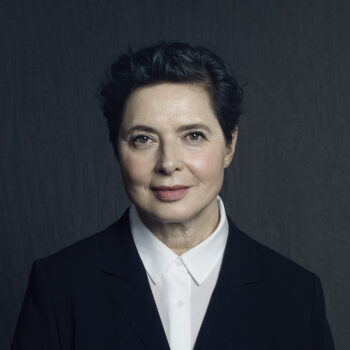
Isabella Rossellini grew up in Paris and Rome and is the daughter of actress Ingrid Bergman and director Roberto Rossellini. She started her career as a model, gracing the cover of over 500 magazines and representing the cosmetic line Lancôme for over 40 years. Rossellini made her cinematic debut as an actress in 1979 and has appeared in many films, including Blue Velvet, Wild at Heart, White Nights, Rodger Dodger, Cousins, Death Becomes Her, Fearless, Big Night, and Joy. She also lent her voice to the Disney-Pixar animated film The Incredibles.
Rossellini has a master’s degree in animal behavior and conservation and has received a PhD Honoris Causa from the science faculty at the University of Quebec at Montreal. She won several Webby awards for her short film series Green Porno, Seduce Me, and Mammas that offer comical and scientifically accurate insights into animal behavior. She also toured extensively worldwide with her theatrical monologues Green Porno and Link Link Circus.
Rossellini’s interests include the preservation of her family’s extraordinary cinematic heritage. She is the founder of Mama Farm, an organic farm in Brookhaven, NY.
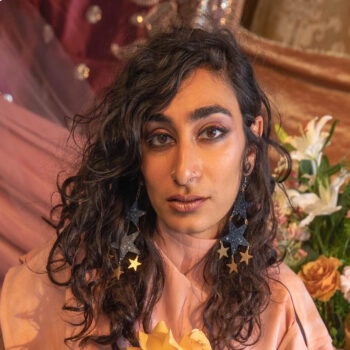
Fatimah Asghar is an artist whose work spans different genres and themes. They have been featured in various outlets such as Time, NPR, Teen Vogue, and the Forbes 30 Under 30 List. They are the author of If They Come For Us and When We Were Sisters, which was longlisted for the National Book Award and won the Carol Shield’s Prize. Along with Safia Elhillo they co-edited an anthology for Muslim people who are also women, trans, gender non-conforming, and/or queer, Halal If You Hear Me. They are the writer and co-creator of the Emmy-nominated Brown Girls, and wrote and directed the short films Got Game and Retrieval. They are also a writer and co-producer on Ms. Marvel on Disney +, and wrote episode five, “Time and Again,” which was listed as one of the best TV episodes of 2022 in the New York Times and Hollywood Reporter.
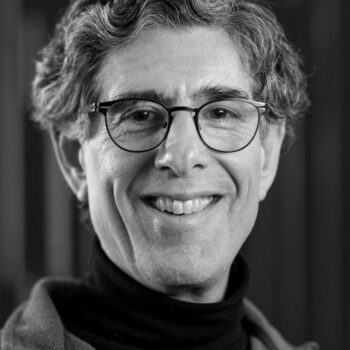
Richie Davidson is best known for his groundbreaking work studying emotion and the brain. A friend and confidante of the Dalai Lama, Time magazine named Dr. Davidson one of “The 100 Most Influential People in the World” in 2006. His research is broadly focused on the neural bases of emotion and emotional style, as well as methods to promote human flourishing; among these, meditation and related contemplative practices. He has conducted studies with individuals with emotional disorders such as mood and anxiety disorders and autism, as well as expert meditation practitioners with tens of thousands of hours of experience. His research uses a wide range of methods including different varieties of MRI, positron emission tomography, electroencephalography, and modern genetic and epigenetic methods. Dr. Davidson is the William James and Vilas Professor of Psychology and Psychiatry at the University of Wisconsin–Madison where he has been a faculty member since 1984. He is the founder of Healthy Minds Innovations, Inc., an external, affiliated nonprofit dedicated to supporting the mission of the Center for Healthy Minds.
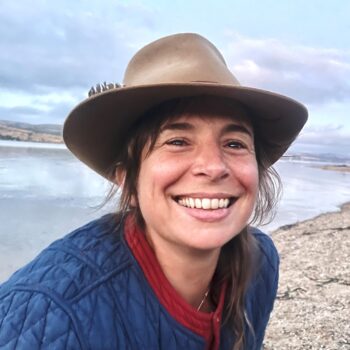
Eve Ekman PhD, MSW, is a contemplative social scientist designing, delivering and evaluating tools to support emotional awareness in the fields of health care, well-being, and technology. She draws from interdisciplinary skills and first-person experiential knowledge from clinical social work, integrative medicine, and contemplative science and meditation. Ekman was raised in San Francisco with a love of New York bagels and social justice action and is a cold water ocean enthusiast.
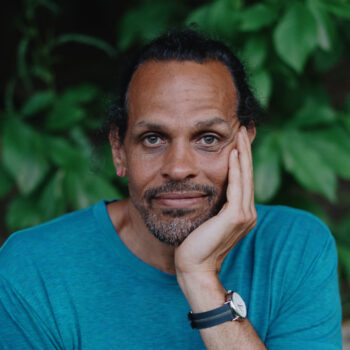
Ross Gay is the New York Times bestselling author of the essay collections The Book of Delights and Inciting Joy and four books of poetry. His Catalog of Unabashed Gratitude won the National Book Critics Circle Award and the Kingsley Tufts Poetry Award, and was a finalist for the National Book Award; and Be Holding won the 2021 PEN America Jean Stein Book Award. Gay is a founding board member of the Bloomington Community Orchard, a nonprofit, free-fruit-for-all food justice and joy project, and has received fellowships from Cave Canem, the Bread Loaf Writers’ Conference, and the Guggenheim Foundation. He teaches at Indiana University.
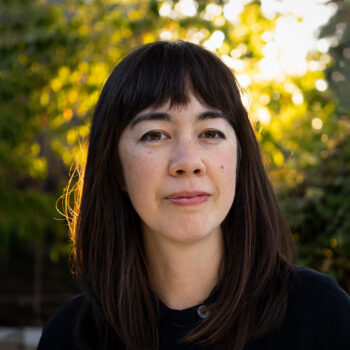
Jenny Odell is an Oakland-based artist and author of the books How to Do Nothing: Resisting the Attention Economy, Inhabiting the Negative Space, and Saving Time: Discovering a Life Beyond the Clock. Her other writing has appeared in the New York Times, Atlantic, and Paris Review, and her visual work has been exhibited in museums and galleries internationally. Odell has been an artist in residence at Recology SF (otherwise known as the dump), the Internet Archive, and the San Francisco Planning Department. Between 2013 and 2021, she taught studio art at Stanford University.
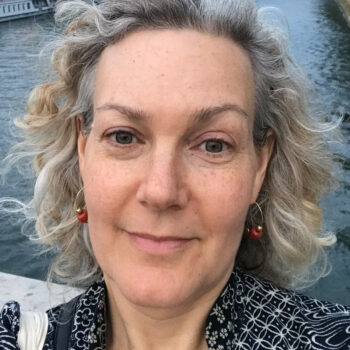
Annabella Pitkin is associate professor of Buddhism and East Asian religions at Lehigh University. Her research focuses on Tibetan Buddhist modernity, Buddhist ideals of renunciation, miracle narratives, and Buddhist biographies. She received her BA from Harvard University and PhD in religion from Columbia University. She is the author of Renunciation and Longing: The Life of a Twentieth-Century Himalayan Buddhist Saint, which explores themes of non-attachment and teacher-student relationship in the life of Khunu Lama Tenzin Gyaltsen. More →
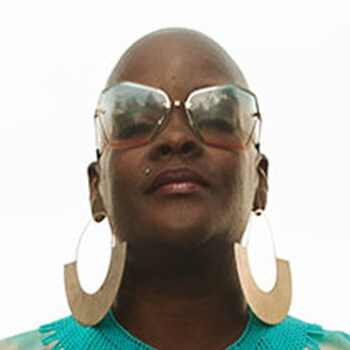
Sonya Renee Taylor is a New York Times best-selling author; world-renowned activist and thought leader on racial justice, body liberation, and transformational change; international award-winning artist; and founder of The Body Is Not an Apology (TBINAA), a global digital media and education company that explored the intersections of identity, healing, and social justice through the framework of radical self-love. Sonya is the author of seven books, including The Body Is Not an Apology: The Power of Radical Self Love.
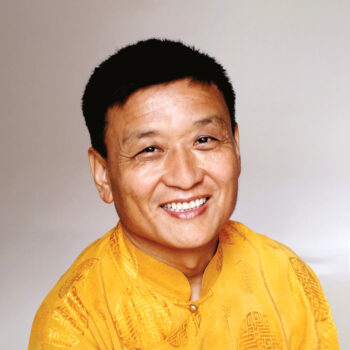
Geshe Tenzin Wangyal Rinpoche, the founder and spiritual director of Ligmincha International, is a respected and beloved teacher and meditation master in the Bon Buddhist tradition of Tibet. He has students in more than 25 countries, teaches around the world, and reaches thousands of students through his online programs. Trained as a Bon monk, Rinpoche now lives as a householder, allowing him to more fully relate to the needs and concerns of his students. Known for the depth of his wisdom and his unshakeable commitment to helping students recognize their true nature, he is the author of ten books, including Wonders of the Natural Mind and the Tibetan Yogas of Dream and Sleep.
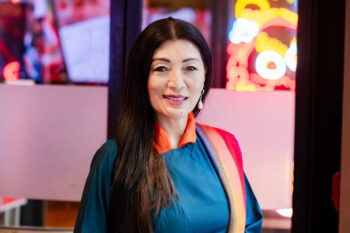
Tashi Chodron is the Himalayan programs and communities ambassador at the Rubin Museum of Himalayan Art.
Get the latest news and stories from the Rubin, plus occasional information on how to support our work.